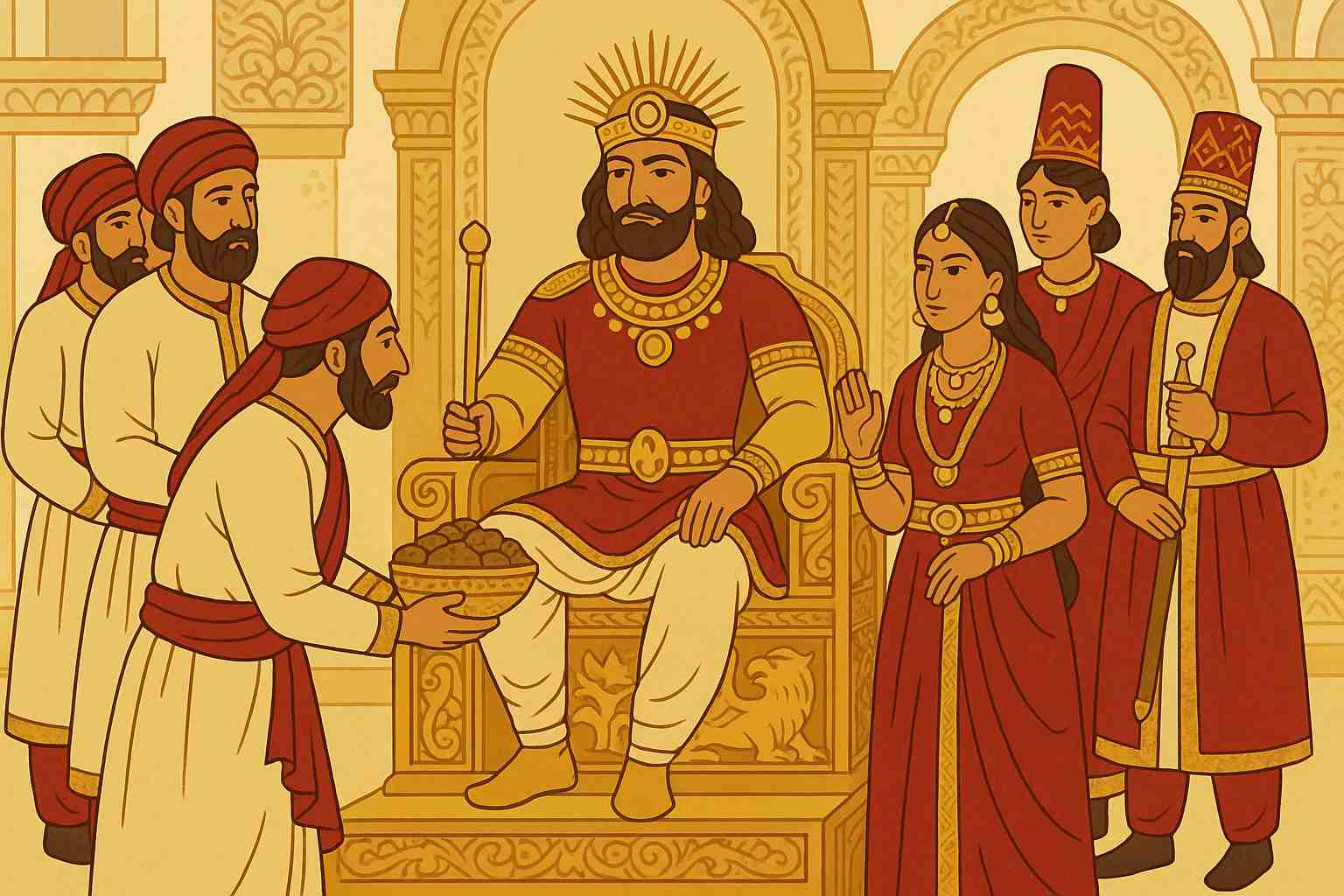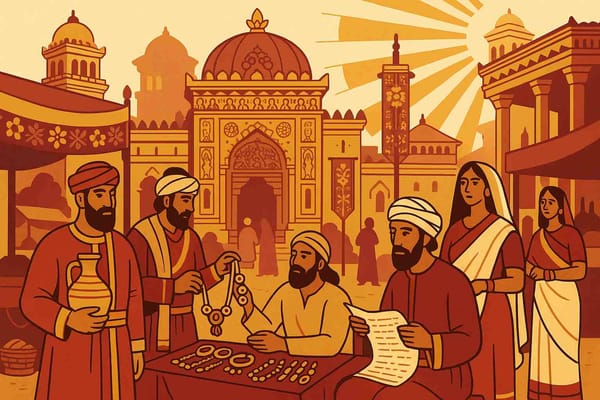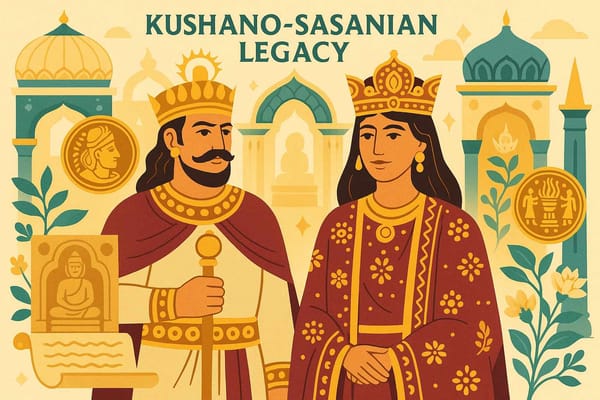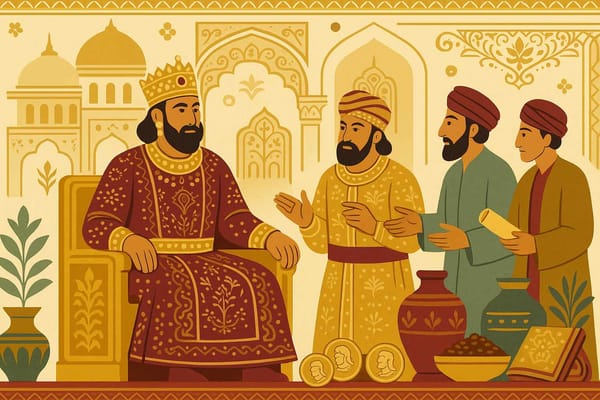
Exploring the Ancient World- Kushano-Sasanians: A Deep Dive
Imagine standing at a crossroads in history, a place where two mighty rivers of culture meet. On one side, the majestic Sasanian Empire of Persia, with its grand courts and Zoroastrian fire altars. On the other, the vibrant Kushan world, echoing with Buddhist chants and the imagery of Hindu deities. In the space where these two worlds mingled, a unique and fascinating story was born – the story of the Kushano-Sasanians. This isn't just a dusty chapter in a history book; it's a living testament to a time when our world was wonderfully interconnected, a beautiful 'sangam' of ideas, art, and spirituality.
For a few centuries, between the 3rd and 4th CE, these rulers carved out a kingdom in what is now Afghanistan, Pakistan, and parts of Central Asia. They weren't just conquerors; they were bridge-builders, creating a culture that felt both familiar and wonderfully new. Let’s take a walk down the lanes of their forgotten empire and rediscover this incredible part of our shared past.
A New Dynasty at the World's Crossroads
The rise of the Kushano-Sasanians happened at a time of great change. The once-mighty Kushan Empire was fading, and the powerful Sasanian kings from Persia, like the legendary Ardashir I, were expanding their influence. Instead of just erasing the old, they did something remarkable. They created a hybrid power that ruled over crucial Silk Road territories like Bactria and Gandhara. This strategic position made them the gatekeepers of trade and ideas flowing between India, China, Persia, and even Rome.
Think of them as guardians of the ancient world's busiest highway. Their cities were buzzing with merchants, monks, and artisans, all sharing their knowledge and wares. This constant exchange created a melting pot of cultures, and nowhere is this more visible than in the legacy they left behind in their coins.
Coins That Tell a Thousand Stories
If you want to understand the heart of the Kushano-Sasanian world, you must look at their coins. These small metal discs are like tiny windows into their soul. They are a masterclass in cultural fusion.
- A Blend of Gods and Kings: On one side, you might see a Sasanian-style ruler with an elaborate crown, a symbol of their Persian roots. But flip the coin, and you could find something astonishing – an image of Lord Shiva with his faithful Nandi bull, or a Zoroastrian fire altar. This shows an incredible respect for the local beliefs of their Indian subjects.
- A Language for Everyone: The legends on these coins were written in various scripts, including Brahmi (the ancestor of many Indian scripts), Pahlavi (Persian), and Bactrian. This wasn't just practical; it was a political statement. It told the people, "We understand you, we respect your traditions, and we are here to rule with you, not just over you."
These coins became a trusted currency across the Silk Road, a symbol of stability and the vibrant economic life of the time. They remind us that embracing diversity can lead to great prosperity.
A Tapestry of Faith and Art
The Kushano-Sasanian era was a time of great spiritual dialogue. Buddhism, which had flourished under the Kushans, continued to thrive. At the same time, Zoroastrianism from Persia found a new home here. Even the prophet Mani, the founder of Manichaeism, travelled through these lands, absorbing the rich spiritual atmosphere. This period shows us that different faiths can coexist and even enrich one another.
This beautiful blend is also seen in their art. While not much architecture survives, the sculptures and motifs from this period showcase a unique style. It's a bit like the intricate traditional arts of Mewar, which tell a story of centuries of history and cultural exchange. You can explore more about such rich artistic traditions right here: Mewar's Rich Heritage: Traditional Arts and Crafts Explained. The art of the Kushano-Sasanians, much like the crafts of Mewar, is a beautiful reminder of our deep-rooted artistic heritage.
The Fading of an Era and Its Lasting Legacy
Like all great empires, the Kushano-Sasanian rule eventually came to an end by the 5th century CE. Pressures from new groups emerging from Central Asia, like the Kidarites and Hephthalites, combined with shifting trade routes, led to their decline. But their legacy didn't just vanish. They left behind a blueprint for cultural harmony and showed how two great civilizations could create something new and beautiful together.
Studying them helps us understand the complex, interconnected history of our subcontinent. It reminds us that our culture has always been open to new ideas, absorbing them to create a unique identity. It’s a story of a time when the world was connected not by the internet, but by caravans of camels and the courage of travellers, a story that still echoes in the mountains and valleys of Central Asia.
Honoring Our Rich and Diverse Past
Exploring stories like that of the Kushano-Sasanians is more than just a history lesson. It’s a way of connecting with the very soul of our heritage. It shows us that our roots are deeper and more diverse than we often imagine. Just as these ancient rulers left their mark on coins and stones, our ancestors have left their wisdom in timeless devotional literature and stories.
At Bhaktilipi, we believe in preserving this precious 'virasat'. Our mission is to bring these ancient bhakti texts and stories to you in a way that feels inspiring and accessible today. We are dedicated to digitally preserving this knowledge so that the wisdom of the past continues to light up our present.
If the story of the Kushano-Sasanians fascinates you, imagine the wealth of knowledge waiting to be discovered in our vast spiritual literature. Dive deeper into the cultural soul of our land, beyond just palaces and forts. You can start your journey here: Beyond the Palaces: Udaipur's Cultural Heritage Awaits.
To continue this journey of discovery and stay connected with more enriching content, we invite you to subscribe to our newsletter. You can also join our growing family on Facebook, Instagram, and our YouTube channel.
A passionate group of people dedicated to preserving India's knowledge of Dharma, Karma, and Bhakti for ourselves and the world 🙏.
Comments
Related in

The Kushano-Sasanians- Explore the Empire's Secrets
Sometimes, the most fascinating stories of our motherland are not the ones we learn in school. We talk endlessly about the Mauryas, the Guptas, and the Mughals, but history has countless hidden chapters, tucked away in the sands of time. One such incredible tale is that of the Kushano-Sasanians, an

Exploring the Legacy of the Kushano-Sasanians: History and Impact
History isn't always about grand battles and massive empires that we read in school textbooks. Sometimes, the most beautiful chapters are written in the quiet spaces in between, where cultures meet, shake hands, and create something entirely new. Imagine a time when the powerful Persian Sasanian empire extended

Kushano-Sasanians- A Forgotten Era of History Explained
History, as we often read it, is a grand narrative of mighty empires and legendary conquerors. But sometimes, the most fascinating tales are hidden in the folds, in the chapters that speak not of conquest, but of confluence—a beautiful sangam of cultures. One such forgotten story is that of
